Farmadelphia
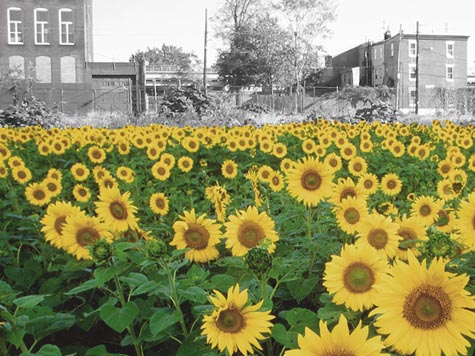 [Image: Front Studio. "Sunflowers aid in the bio-cleansing of land in preparation for crop farming"].
[Image: Front Studio. "Sunflowers aid in the bio-cleansing of land in preparation for crop farming"].Last month, Front Studio architects gave a talk at the University of Pennsylvania Department of City & Regional Planning. There they outlined "Farmadelphia," their now widely known proposal for the transformation of Philadelphia, in which that city's vacant and abandoned lots are turned into a thriving agricultural zone – complete with crops grown for local consumption and soil remediation, and with an eye toward future tourism, including surreal petting zoos, hay rides, and even corn mazes.
 [Image: Front Studio].
[Image: Front Studio].Philadelphia would become "an 'edible landscape'," we read, "with vast crop fields, and free roaming farm animals."

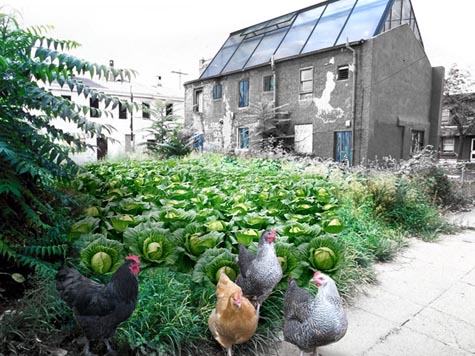 [Images: Front Studio. "Free roaming city cows graze on locally owned pasture" (top); chickens hang out amidst lettuce (bottom)].
[Images: Front Studio. "Free roaming city cows graze on locally owned pasture" (top); chickens hang out amidst lettuce (bottom)].The project would also address – or is intended to address – "the rehabilitation of the existing city fabric by proposing ideas for vacant buildings that would allow the present-day character to remain while creating new uses."
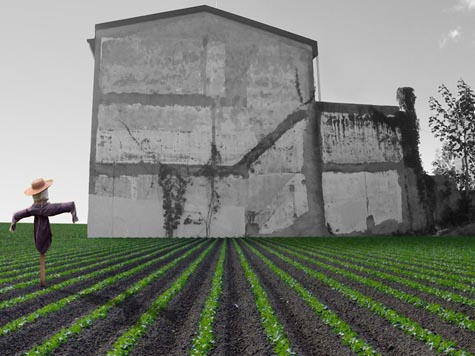 [Images: Front Studio].
[Images: Front Studio].From the project description:
- For example, an abandoned building could have its walls and ground lined with a non-permeable membrane to prevent soil contamination for new plantings. Then layers of a weed barrier, soil bed, loam and mulch are added on top. The nurseries would provide: year-round job opportunities, high profit yields from selling flowers and the adaptive reuse of abandoned buildings.
 [Image: Front Studio. Philadelphia's "urban voids interwoven with agricultural patchwork"].
[Image: Front Studio. Philadelphia's "urban voids interwoven with agricultural patchwork"].This urban re-wilding would also include "the rehabilitation of abandoned buildings into stables to house animals."
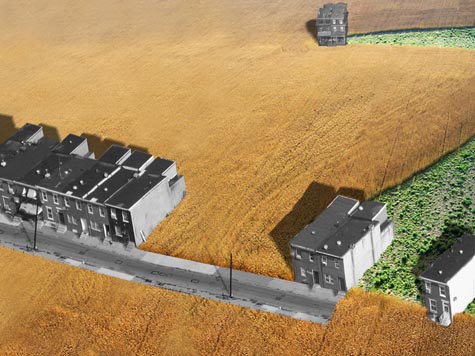 [Images: Front Studio].
[Images: Front Studio]."Looking into Philadelphia’s past," Front Studio writes, one finds "a green legacy dating back to William Penn’s pastoral vision of a 'green countrie towne'."
But what about Philadelphia's green future – not its past or some distant legacy it's passively inherited?
How might Philadelphia actively re-green itself for the future?
Some appropriate crops for the proposed agricultural stabilization of the city might include the following, the architects suggest:
- —start with low maintenance, easy to grow, and profiting crops; consider perennial crops such as asparagus, shallots, garlic and herb varieties
—other crops include shade tolerant, easy to grow kale, sweet potatoes, lettuce
—other crops that do well in Philadelphia climate: collard greens, broccoli, mustard greens, corn, raspberry bushes
More about the project can be found on Front Studio's own website (under "Work" and then "Competition").
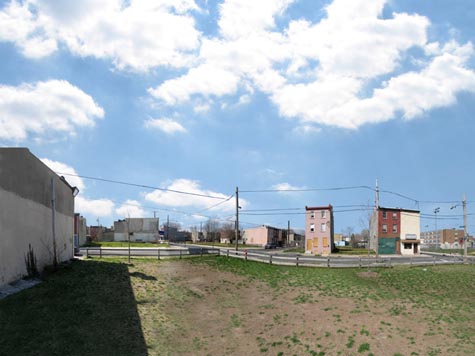
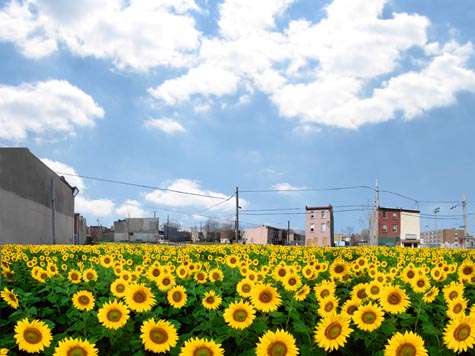
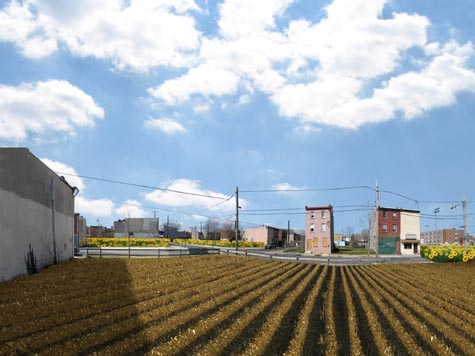
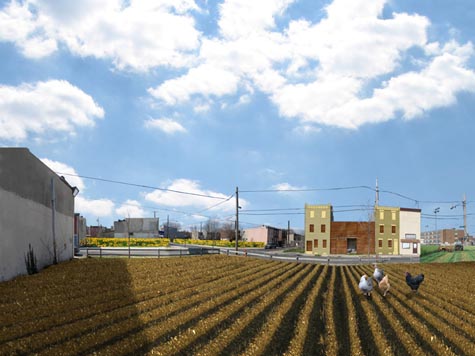
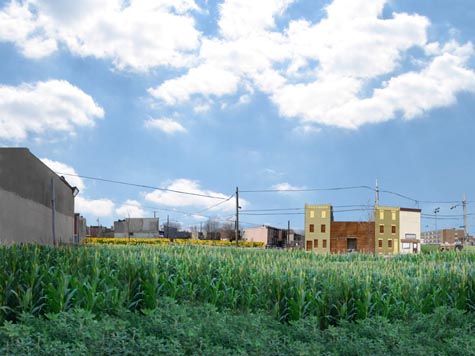 [Images:
[Images:
No comments:
Post a Comment